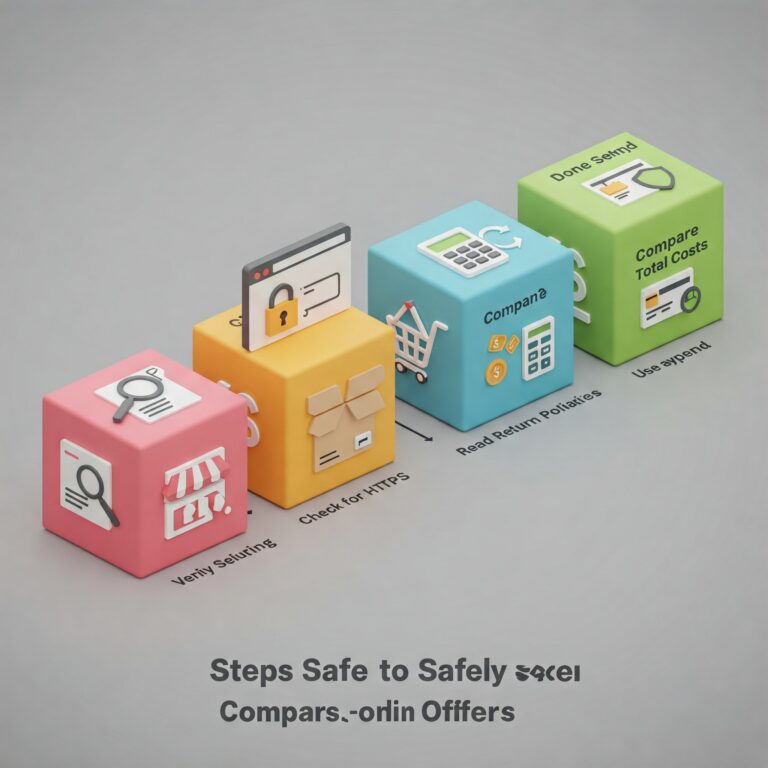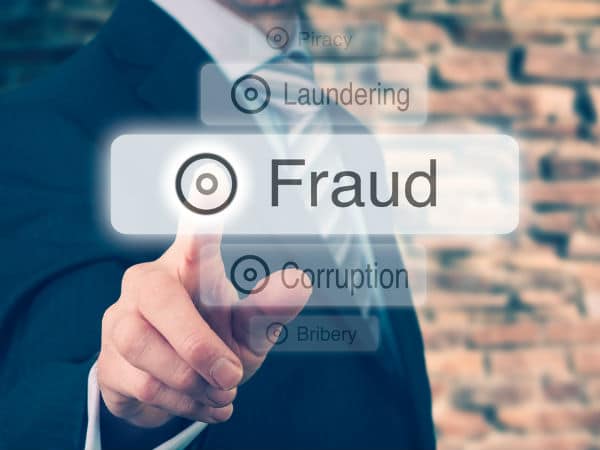Shopping and Saving MoneyShop Smarter, Save More, Stay Safe: The Ultimate 2025 Guide to Online Shopping & Fraud PreventionShopping and Saving Money
Introduction: The Allure and Pitfalls of Online Shopping: Saving Money While Staying Safe
The digital marketplace offers unparalleled convenience, vast selection, and the tantalizing prospect of significant savings. From everyday essentials to major purchases, the ability to shop from anywhere at any time has transformed consumer behavior. However, this digital convenience comes intertwined with escalating risks. Online scams and fraudulent activities are increasingly sophisticated, posing a significant threat to unwary shoppers. The financial toll is staggering, with consumers reporting losses of over $12.5 billion to fraud in 2024 alone, a marked increase from previous years, driven partly by a higher percentage of victims reporting monetary loss. Impersonation scams, where fraudsters pose as legitimate businesses or government entities, are particularly rampant, contributing billions to these losses.
Navigating this landscape successfully requires more than just hunting for bargains. It demands a strategic approach that balances the desire to save money with a critical need for vigilance and security awareness. The emergence of new technologies like Artificial Intelligence (AI) and the proliferation of payment options such as Buy Now, Pay Later (BNPL) add further layers of complexity, creating both opportunities and novel avenues for exploitation. This guide aims to equip consumers with the knowledge and tools needed to shop smarter, maximize savings, and, crucially, fortify their defenses against the ever-evolving threats of online fraud in 2025 and beyond. It’s about finding not just the best deals, but the safest deals.
Building Your Smart Shopping Foundation
Before diving into specific tools and tactics, establishing a solid foundation based on planning and research is essential for both saving money and avoiding pitfalls.
The Power of Planning: Budgeting, Needs vs. Wants, Avoiding Impulse Buys
Effective online shopping begins not with browsing, but with planning. A primary defense against overspending and falling prey to deceptive offers is setting a realistic budget before making any purchases. Breaking this budget down into specific categories (e.g., groceries, clothing, electronics) provides clear financial guardrails and helps prioritize spending. Budgeting apps or simple spreadsheets can be invaluable tools for tracking expenses and identifying potential savings areas.
Equally important is the creation of a shopping list. Online retailers excel at creating seamless, visually appealing experiences designed to encourage quick, often unthinking purchases through tactics like one-click buying and flashy sale banners. A list acts as a crucial anchor, keeping focus on genuine needs rather than succumbing to impulse buys often triggered by these sophisticated marketing strategies. Distinguishing between needs and wants is fundamental to this process. For businesses sourcing products, this means deeply understanding the target customer’s lifestyle, values, and habits. For individual consumers, it involves honest self-assessment.
Furthermore, recognizing emotional triggers for spending is key. The H.A.L.T. principle suggests avoiding purchases when Hungry, Angry, Lonely, or Tired, as these states can increase vulnerability to impulse decisions that lead to regret. Proactive planning—budgeting, list-making, and understanding purchase motivations—shifts the shopper from a reactive state, easily swayed by enticing but potentially deceptive deals, to a proactive stance, making deliberate choices aligned with financial goals and actual needs. This mindful approach inherently reduces susceptibility to scams that prey on impulsivity.
Timing Your Purchases for Maximum Savings: Sales Cycles, Events, and Clearance
Strategic patience can yield significant financial rewards. Retailers follow predictable sales cycles, offering substantial discounts during specific periods. Timing purchases to coincide with these events is a cornerstone of smart shopping. Major opportunities include:
- Seasonal Sales: End-of-season clearance events (e.g., winter sales in January/February, summer sales in July/August) are prime times to find discounts as retailers clear out old inventory.
- Major Shopping Holidays: Black Friday and Cyber Monday remain key dates for deep discounts, particularly on electronics like TVs, laptops, and gaming consoles.
- Other Events: Back-to-school sales offer deals on laptops and accessories , while year-end clearance sales provide another chance to save as retailers prepare for new models. Holiday seasons often bring special promotions.
Staying informed about upcoming sales is crucial. This can be achieved by signing up for newsletters from favorite retailers (which often provide early access or exclusive codes) or following brands on social media for timely announcements. By understanding and anticipating these retail cycles, consumers can plan major purchases accordingly, accessing significantly lower prices compared to buying on impulse. This requires foresight and the willingness to delay gratification, transforming patience into a powerful savings tool.
Beyond the Price Tag: Researching Quality, Reading Reviews, and Comparing Options
While finding a low price is appealing, the “best deal” encompasses more than just the initial cost. True value lies in a combination of price, quality, durability, and fitness for purpose. Investing in higher-quality items, particularly those intended for frequent or long-term use, often proves more economical over time, avoiding the hidden costs of replacing cheap, poorly made goods.
Thorough research is therefore essential. This involves:
- Comparing Prices: Utilize search engines and price comparison websites to check costs across multiple retailers for the same item. Remember to factor in shipping costs, which may not be included in initial comparisons. Some retailers also offer price-matching policies.
- Assessing Quality: Look beyond marketing descriptions. For clothing, consider the “cost per wear” to determine the true value of an item based on its likely longevity and frequency of use. Seek out durable materials and reliable brands.
- Reading Reviews Critically: Consult online reviews from multiple sources, including expert reviews and feedback from other purchasers. Be aware that fake reviews exist; look for overly generic praise, repetitive phrasing, or an overwhelming number of exclusively five-star reviews as potential red flags. Searching the product or seller name along with terms like “review,” “complaint,” or “scam” can surface potential issues, especially for unfamiliar vendors.
This holistic approach to research—evaluating quality and reputation alongside price—not only helps in securing genuine value but also acts as an inherent safety check. Legitimate products and sellers typically have a verifiable track record and a diverse range of authentic feedback, while scams often lack this depth or exhibit suspicious patterns.
Your Digital Toolkit for Online Savings
Beyond foundational planning, a variety of digital tools and tactics can help unlock further savings in the online marketplace.
Unlocking Discounts: Mastering Coupons, Promo Codes, and Browser Extensions
Before finalizing any online purchase, dedicating a few moments to search for coupons or promotional codes can lead to immediate savings. Numerous websites aggregate these codes, though their effectiveness can vary. A more streamlined approach involves using browser extensions, such as Honey (owned by PayPal), which automatically search for and test applicable codes during the checkout process on thousands of shopping sites.
These extensions typically work by detecting when a user is on a supported retail site. A small icon or pop-up indicates their presence. At checkout, the user can activate the extension, which then cycles through its database of known codes for that specific retailer, testing each one against the items in the cart. If a working code is found, the extension automatically applies the one offering the largest discount. Some extensions even bundle coupon searching with other features like price tracking or rewards points. Another avenue for finding codes is checking if a company has influencer, advocate, or ambassador programs, as participants often share unique discount codes on social media.
While convenient, these tools require mindful usage. A significant discount might tempt a user to purchase items they don’t truly need or to spend more than intended to meet a discount threshold (e.g., “20% off orders over $100”). Furthermore, users should be aware of the trade-offs. These extensions often collect data about browsing and shopping habits, as outlined in their privacy policies. Their primary business model relies on earning affiliate commissions from retailers; when a user makes a purchase after activating the extension, the extension’s owner (like PayPal for Honey) may receive a commission. This mechanism can sometimes interfere with other affiliate tracking, potentially redirecting commission away from the original source that referred the customer (like a blogger or influencer). Therefore, while automated savings tools offer undeniable convenience, users should weigh these benefits against potential data privacy implications and the less visible dynamics of the affiliate marketing ecosystem.
Earning While You Spend: Cashback Platforms, Loyalty Programs, and Credit Card Rewards
Beyond direct discounts, several methods allow consumers to earn back value on their purchases. Cashback platforms, such as Rakuten, operate on a simple premise: users start their shopping journey through the Rakuten website, mobile app, or browser extension, navigate to a partner retailer, and make a purchase. The retailer pays Rakuten a commission for sending the customer, and Rakuten shares a portion of that commission back with the user as cashback. Cashback rates vary by retailer and can range from 1% to over 20%, or sometimes be a flat dollar amount. Payments are typically made quarterly via PayPal or check. Some platforms, including Rakuten, also offer in-store cashback opportunities by linking a credit or debit card to the account and activating specific offers before shopping in physical stores. Rakuten employs a “Dynamic Cash Back” strategy, adjusting rates based on various factors to influence shopper behavior and drive sales for partner brands.
Store-specific loyalty programs are another valuable tool. Signing up (often for free) can grant access to members-only discounts, exclusive sales, birthday offers, or points accumulation leading to rewards or future savings. These programs are designed to foster repeat business and reward customer loyalty.
Credit card rewards programs offer a third avenue. Many cards provide points, miles, or direct cashback on purchases. Using these accumulated rewards for online shopping can sometimes offer better redemption value than other options. However, caution is advised against opening new credit cards solely to chase rewards, especially if it could negatively impact credit scores or lead to carrying balances with interest charges that negate the savings. Financial stability and credit health should always be the priority.
Maximizing savings often involves actively engaging with these programs and understanding their mechanics. For instance, using a rewards credit card while initiating a purchase through a cashback portal like Rakuten can potentially allow a user to “stack” rewards, earning both credit card points and platform cashback on the same transaction. However, it’s crucial to remember that these programs incentivize specific behaviors and often involve sharing purchasing data.
Savvy Tactics: The Art of the Abandoned Cart, New Customer Offers, and Wish Lists
Consumers can sometimes turn retailers’ own marketing tactics to their advantage. One such strategy involves the “abandoned cart.” Online stores meticulously track user activity, including items added to a shopping cart but not purchased. By deliberately adding desired items to the cart and then leaving the website without completing the purchase, shoppers may trigger automated follow-up emails from the retailer. These emails often contain discount codes or special offers designed to entice the customer back to finalize the transaction. This tactic requires patience, as the follow-up offer isn’t guaranteed and may take a day or two to arrive.
Retailers frequently provide incentives to attract new customers. Looking for and utilizing “new customer” or “first-time purchase” offers, often provided in exchange for signing up for an email newsletter or text message alerts, can yield immediate discounts or free shipping. While signing up provides access to deals, it also means receiving ongoing promotional messages; users should be prepared to unsubscribe later if these emails become a source of unwanted temptation leading to unplanned spending.
Many e-commerce sites feature “wish list” or “save for later” functionalities. Adding items to these lists without purchasing immediately serves as a personal organization tool but can also trigger retailer notifications. If the price of a saved item drops, the retailer might send an alert, prompting the user to buy at the lower price. This allows shoppers with flexibility in their purchase timing to potentially secure savings passively.
These tactics leverage the automated systems retailers use for customer retention and conversion. By understanding how these systems work, shoppers can strategically interact with websites—abandoning carts, signing up as new customers, utilizing wish lists—to potentially unlock discounts generated by the retailers themselves.
Feature Comparison: Popular Savings Browser Extensions (Honey vs. Rakuten)
Choosing the right savings tool depends on individual shopping habits and preferences. Honey and Rakuten are two prominent browser extensions discussed, each with distinct features and approaches. The following table compares their key characteristics based on available information :
| Feature | Honey (PayPal Rewards) | Rakuten |
|---|---|---|
| Primary Function | Automatically finds & tests coupon codes at checkout | Activates cashback offers before shopping; user must initiate via Rakuten |
| Cashback Mechanism | Earns “PayPal Rewards” points, redeemable for cash, PayPal credit, gift cards | Earns direct cashback percentage or flat amount |
| Coupon Application | Automatic testing and application of best code found | May find coupons (via browser extension), but primary focus is cashback activation |
| Price Tracking | “Droplist” feature notifies users of price drops on saved items | Less emphasized as a primary feature compared to Honey |
| Amazon Integration | Compares sellers, shows price history, finds deals on Amazon | Partner retailer, offers cashback on eligible Amazon categories (rates vary) |
| In-Store Offers | Offers in-store cashback by linking card & activating offer | Offers in-store cashback by linking card & activating offer |
| Payout Options | PayPal, PayPal Shopping Credit, Gift Cards (US) | PayPal, Physical Check, Amex Membership Rewards points |
| Payout Frequency | Points redeemable once thresholds met (e.g., 1000 points for $10 gift card) | Quarterly (every 3 months) |
| Data Collection Summary | Collects personal info provided & shopping activity data; states data not sold | Collects data necessary for tracking purchases and awarding cashback |
| Primary Monetization | Affiliate commissions from partner merchants | Affiliate commissions from partner merchants |
This comparison highlights key differences. Honey excels in automatic coupon application, while Rakuten’s strength lies in its direct cashback model across a vast network. Users prioritizing automatic discounts might prefer Honey, while those focused on maximizing cashback percentages might lean towards Rakuten, keeping in mind the need to actively initiate shopping sessions through Rakuten’s platform. Both involve data collection inherent to their function and rely on affiliate commissions.
Fortifying Your Defenses: Safe Online Shopping Practices
While saving money is a key goal, ensuring the safety and security of personal and financial information during online transactions is paramount.
Decoding Digital Storefronts: Spotting Fake Websites and Scams
The internet is rife with fraudulent websites designed to mimic legitimate retailers, making vigilance essential. Scammers leverage sophisticated techniques and platforms like social media and search engines to lure unsuspecting victims. Recognizing the red flags of a fake online store is the first line of defense:
- Unrealistic Deals: Prices that seem “too good to be true” are a classic warning sign. If an item is offered at a dramatically lower price than reputable retailers, it’s likely a scam.
- Poor Website Quality: Look for unprofessional design, numerous spelling or grammatical errors, and low-quality images. However, be aware that AI can now generate highly polished fake sites.
- Suspicious URLs: Carefully examine the website address. Scammers often use URLs that slightly alter a legitimate brand’s name (e.g., adding extra words, using hyphens, or changing the domain extension like.co instead of.com). Always check that the official brand name is spelled correctly.
- Missing Information: Legitimate businesses provide clear contact information (physical address, phone number), detailed privacy policies, and comprehensive refund/exchange policies. Absence of this information is highly suspicious.
- Pressure Tactics: Scam sites may use countdown timers, limited stock warnings, or high-pressure language (“Act Now!”) to rush buyers into making decisions without proper scrutiny.
- Fake Ads and Social Media: Be wary of ads, especially on social media platforms like Facebook and Instagram, promoting unbelievable deals. BBB Scam Tracker receives numerous reports about misleading ads. Instead of clicking directly on ads or links in unsolicited emails/texts, navigate directly to the company’s official website by typing the URL into the browser.
When encountering an unfamiliar retailer, conduct due diligence. Search the company’s name online along with terms like “reviews,” “scam,” or “complaint”. Check resources like the Better Business Bureau (BBB) for company profiles and customer feedback. The BBB also tracks specific scam types, such as fake “going out of business” sales for bankrupt retailers , counterfeit goods sold through appealing ads , or non-delivery scams where products never arrive. Sticking to well-known, trusted retailers significantly reduces risk.
Secure Transactions 101: HTTPS, Padlocks, and Safe Payment Methods
Ensuring the security of the transaction itself is crucial. Before entering any payment information, verify the website’s security:
- Check for HTTPS: The URL should begin with
https://, not justhttp://. The ‘s’ stands for ‘secure,’ indicating that the connection is encrypted. - Look for the Padlock: A closed padlock icon should appear in the browser’s address bar, signifying a secure connection.
The choice of payment method significantly impacts consumer protection. Credit cards are strongly recommended for online purchases due to the robust protections they offer. Key advantages include:
- Dispute Rights: The Fair Credit Billing Act (FCBA) grants consumers the right to dispute charges for goods not received, items that are significantly different from described, or unauthorized transactions. Payment can often be withheld during the investigation.
- Liability Limits: Federal law typically limits liability for unauthorized credit card use to $50, and many issuers offer zero liability policies.
Other payment methods generally offer less protection and should be used with extreme caution, especially with unfamiliar sellers:
- Debit Cards: Lack the same federal protections as credit cards. Funds are deducted directly from a bank account, making recovery more difficult.
- Wire Transfers (e.g., Western Union, MoneyGram): Often requested by scammers because they are fast and virtually impossible to reverse once the funds are collected. Never send money via wire transfer for online shopping to unknown parties.
- Gift Cards: Another favorite tool for scammers. Once the card details are shared, the funds are usually gone. Legitimate businesses will not demand payment via gift card.
- Payment Apps (e.g., Venmo, Zelle): While convenient, these are often designed for payments between known individuals. Using them with strangers carries risk, and recovery options may be limited.
- Direct Bank Transfers: Paying directly into a seller’s bank account before receiving goods is risky and offers little recourse if problems arise.
Never send credit card numbers or other sensitive financial details via email, as it is not a secure communication method. Reputable online payment services like PayPal can offer an additional layer of security, but be wary of fake login pages or unusual checkout processes (e.g., being asked to “donate” instead of pay). Consistently using a credit card provides the strongest safety net against financial loss from online shopping fraud.
Protecting Your Identity: Minimizing Data Exposure and Understanding Privacy Policies
Safe online shopping extends beyond secure transactions to safeguarding personal identity. Minimizing the amount of data shared is a key principle. Be wary of requests for information that seems unnecessary for the purchase, such as Social Security numbers, driver’s license numbers, or bank account details unless absolutely required for a specific, legitimate purpose.
Strong account security is vital:
- Use Strong, Unique Passwords: Avoid reusing passwords across different shopping sites. A password manager can help create and store complex passwords securely.
- Enable Two-Factor Authentication (2FA): Wherever available, enable 2FA (also called multi-factor authentication). This adds an extra layer of security beyond just a password, typically requiring a code sent to a phone or email.
Understanding how websites and tools handle data is also important. Review privacy policies to understand what information is collected and how it’s used, stored, and protected. This is particularly relevant when using browser extensions or apps that track shopping activity. Regularly clearing browser cookies can help limit the amount of tracking data accumulated over time.
Data breaches are an unfortunate reality, and stored payment information can be compromised. Using robust security software with features like malware and phishing protection can provide an additional defense. By practicing good data hygiene—sharing minimally, securing accounts strongly, and being aware of data collection practices—consumers can reduce their overall risk profile beyond just individual transactions.
Navigating New Frontiers: BNPL, AI, and Modern Threats
The online shopping landscape is continually evolving, presenting new conveniences alongside novel risks. Understanding Buy Now, Pay Later services and the impact of Artificial Intelligence is crucial for modern consumers.
The Buy Now, Pay Later Boom: Convenience vs. Hidden Risks
Buy Now, Pay Later (BNPL) services, offered by companies like Affirm, Afterpay, Klarna, PayPal, and Zip, have exploded in popularity. These services typically allow consumers to split purchases into several installments (often four), usually with zero interest charged if payments are made on time. They are frequently presented as a payment option alongside traditional credit cards at checkout.
While convenient, BNPL carries significant risks highlighted by regulatory bodies like the Consumer Financial Protection Bureau (CFPB), the Federal Trade Commission (FTC), and the Office of the Comptroller of the Currency (OCC):
- Debt Accumulation and “Loan Stacking”: The ease of obtaining BNPL loans can lead consumers to take on multiple loans simultaneously across different providers, making it difficult to track payments and manage overall debt. This “loan stacking” is common, especially during peak shopping seasons. Borrowers may overextend themselves without fully realizing their total obligations.
- Lack of Comprehensive Credit Reporting: Historically, many BNPL providers did not fully report loan activity to the major credit bureaus. This “credit invisibility” can mask a borrower’s true debt load, making it harder for both the consumer and other lenders to assess financial health. While some reporting occurs, it’s inconsistent.
- Fees: While often advertised as interest-free, most BNPL providers charge late fees if payments are missed. If automatic payments are linked to a debit card or bank account, missed payments can also trigger overdraft or non-sufficient funds (NSF) fees from the consumer’s bank.
- Regulatory Gaps and Fewer Protections: BNPL products initially operated in a regulatory gray area, often lacking the robust consumer protections mandated for credit cards, particularly regarding dispute resolution for faulty or undelivered goods. This left consumers vulnerable if problems arose with merchants.
- Data Harvesting: BNPL providers collect extensive data on consumer spending habits, which can be used for targeted marketing or developing closed-loop shopping ecosystems, raising privacy concerns.
- Deceptive Practices: Regulators warn against misleading advertising (e.g., promoting “zero cost” while obscuring potential fees) and “dark patterns” in user interfaces designed to manipulate consumers into using BNPL without fully understanding the terms.
Recognizing these issues, the regulatory landscape is shifting. In May 2024, the CFPB issued an interpretive rule clarifying that BNPL lenders are considered “credit card providers” under existing regulations. This significant move mandates that BNPL providers must offer key protections similar to traditional credit cards, including the right for consumers to dispute charges and receive refunds for returned merchandise. This aims to bring consistency and enhance consumer protection in the rapidly growing BNPL market.
BNPL usage is particularly high among younger consumers (18-24) and those with subprime credit scores, who may be more vulnerable to debt accumulation. Studies suggest consumers might turn to BNPL when their traditional credit card liquidity is low. Given these factors, consumers should approach BNPL with caution, fully understanding the repayment terms, potential fees, and implications for their overall financial health, despite the recent regulatory enhancements.
Table: Common BNPL Providers & Potential Consumer Risks Highlighted by Regulators
The following table summarizes key risk areas associated with major BNPL providers, based on concerns raised in regulatory inquiries and reports :
| BNPL Provider (Mentioned in CFPB Inquiry ) | Key Risk Area | Regulatory Concern/Finding Summary |
|---|---|---|
| Affirm, Afterpay, Klarna, PayPal, Zip | Debt Accumulation / Loan Stacking | Ease of obtaining multiple loans can lead to overextension and difficulty tracking payments. |
| Affirm, Afterpay, Klarna, PayPal, Zip | Credit Reporting Practices | Inconsistent or incomplete reporting to credit bureaus can mask true debt load, hindering accurate credit risk assessment. |
| Affirm, Afterpay, Klarna, PayPal, Zip | Fee Structures | Potential for late fees; linking to bank accounts can trigger overdraft/NSF fees if funds are insufficient. |
| Affirm, Afterpay, Klarna, PayPal, Zip | Dispute Resolution Issues | Historically lacked robust dispute/refund protections like credit cards; new CFPB rule aims to mandate these rights. Problems resolving issues with merchandise returns. |
| Affirm, Afterpay, Klarna, PayPal, Zip | Data Usage / Harvesting | Collection of extensive purchasing data used for marketing and potentially creating closed-loop shopping apps. |
| Affirm, Afterpay, Klarna, PayPal, Zip | Disclosure & Transparency | Risk of unclear or obscured terms, potentially misleading “zero cost” advertising, use of “dark patterns” in interfaces. |
AI in E-commerce: Friend and Foe
Artificial Intelligence (AI) is increasingly integrated into the online shopping experience, offering both benefits and significant new threats. On the positive side, AI powers personalized product recommendations, visual search tools like Google Lens that allow price comparisons from images, and potentially more efficient customer service chatbots.
However, AI also equips scammers with powerful tools to create highly convincing frauds at scale. Malicious uses include:
- AI-Generated Fake Product Images: Scammers use AI image generators (like DALL-E, Midjourney) to create realistic-looking but entirely fake images of desirable products, such as unique plants, artisan mugs, intricate ornaments, or furniture. These images are used in listings on platforms like Amazon, Etsy, eBay, and social media marketplaces. Victims may receive nothing, a cheap substitute, or generic items bearing no resemblance to the advertised product.
- Deepfake Reviews and Endorsements: AI can generate plausible-sounding text for fake product reviews, making it harder to gauge genuine customer satisfaction. Furthermore, deepfake videos featuring celebrities (like Elon Musk) or influencers are used to endorse scam products or investment schemes, lending false credibility. A significant number of consumers report having unknowingly purchased products based on such deepfake endorsements.
- Fake Websites and Listings: AI can rapidly generate entire websites, including product descriptions and images, making scam stores look more legitimate and harder to distinguish from real businesses. AI can also create fake listings for marketplaces or rental properties.
- Enhanced Phishing: AI can craft more personalized and grammatically correct phishing emails and messages, making them more deceptive.
Spotting AI-generated fakes requires a new level of critical assessment, as traditional indicators like poor grammar may be absent. Key detection tips include:
- Look for Inconsistencies: Examine images closely for unnatural symmetry, odd details, inconsistent lighting, or features that defy logic (e.g., lines not aligning on a “crystal” mug, impossible physics). AI struggles with consistent details across multiple generated images.
- Check for Multiple Angles: Legitimate listings usually show products from various perspectives. A single, perfect image used repeatedly, perhaps in different backgrounds, is suspicious.
- Verify Seller Reputation: Check the seller’s history, reviews (looking for photos posted by actual buyers), and overall online presence. Newly created profiles with no track record are risky.
- Reverse Image Search: Use tools like Google Images to see if the product image appears elsewhere online, potentially revealing its origin or use in other scams.
- Read Descriptions Carefully: Look for vague terms (“rare hybrid”) or overly dramatic claims. Check if the description matches the image (e.g., a listing for a 3D ornament where buyers receive flat acrylic discs).
- Compare Pricing: If a seemingly high-quality or intricate item is priced far below comparable products, it might be an AI-generated fake listing.
As AI evolves, so too will detection methods. Some web browsers are incorporating tools to help identify potential domain impersonation or typo-squatting. However, consumer vigilance remains the most crucial defense against these increasingly sophisticated AI-driven scams.
Staying Ahead of the Latest Scams: Insights from the FTC
Staying informed about prevalent scam tactics is essential for protection. The Federal Trade Commission (FTC) regularly releases data and alerts based on consumer reports, highlighting current trends. Key insights from recent FTC findings include:
- Impersonation Scams Dominate Reports: Scams where fraudsters pretend to be legitimate businesses (like Amazon, PayPal) or government agencies (like the IRS, Social Security Administration, or even the FTC itself) remain the most frequently reported type of fraud. These scams caused $2.95 billion in reported losses in 2024. The FTC is actively enforcing its new Impersonation Rule to combat this.
- Investment Scams Lead Losses: While not the most reported, investment-related scams result in the highest aggregate financial losses, totaling $5.7 billion reported in 2024. These often promise high returns quickly and may involve cryptocurrency or deepfake endorsements.
- Online Shopping Problems Persist: Issues related to online shopping (non-delivery, counterfeit goods, misleading ads) consistently rank among the top reported fraud categories.
- Job Scams Skyrocketing: Reports of scams related to business and job opportunities have surged, with losses jumping significantly. Fake job postings, bogus recruitment emails, and “task scams” (requiring victims to invest their own money to complete online tasks) are common tactics.
- Text Message Scams Increasing: Scams initiated via text message (smishing) are a growing threat, with reported losses hitting $470 million in 2024. Common themes include fake package delivery alerts, phony bank fraud warnings, bogus job offers, and fake unpaid toll notices.
- High-Risk Payment Methods: Bank transfers and cryptocurrency payments account for the largest reported monetary losses across all scam types combined. This underscores the danger of using irreversible payment methods with unknown parties.
- Social Media as a Major Vector: A significant portion of scams resulting in financial loss originate on social media platforms, often through deceptive ads or direct messages.
- Demographic Differences: While younger adults (ages 20-29) report losing money to scams more frequently, older adults (70+) tend to lose significantly larger amounts per incident when they do fall victim.
These trends highlight the need for caution across various communication channels (email, text, social media, phone calls) and reinforce the importance of verifying identities, being skeptical of unsolicited offers, and choosing secure payment methods like credit cards whenever possible. Awareness of specific, trending scam types—like impersonation, investment promises, and fake job offers—is crucial for early recognition and avoidance.
When Things Go Wrong: Consumer Rights and Taking Action
Despite best efforts, consumers may still fall victim to online shopping scams or encounter legitimate disputes with sellers. Understanding consumer rights and knowing the appropriate steps to take is crucial for mitigating damage and seeking resolution.
Knowing Your Protections: Key Laws and Regulations
Several federal laws provide a baseline of protection for consumers engaging in online commerce:
- Mail, Internet, or Telephone Order Merchandise Rule: Often called the “30-Day Rule,” this regulation requires sellers to ship orders within the timeframe they promise, or within 30 days if no timeframe is specified. If a seller cannot meet the deadline, they must notify the buyer and offer the option to cancel the order for a full refund. This rule applies to most goods ordered online, by mail, or by phone.
- Fair Credit Billing Act (FCBA): This vital law provides dispute rights primarily for credit card purchases. Consumers can dispute billing errors, including charges for goods or services not delivered or not as described, by notifying their credit card issuer in writing within 60 days of the statement date. The issuer must investigate, and payment can typically be withheld during the investigation. The FCBA also limits liability for unauthorized charges.
- Federal Trade Commission (FTC) Act: This broad act prohibits unfair or deceptive acts or practices in commerce. This includes false advertising, misleading claims about products or services, deceptive pricing, and unfair billing practices. The FTC uses this authority to take action against fraudulent businesses.
- CFPB Interpretive Rule on BNPL: As discussed earlier, the CFPB has clarified that BNPL lenders qualify as credit card providers under Regulation Z, extending critical protections like the right to dispute charges and demand refunds for returned goods to BNPL users.
In addition to federal laws, consumers are protected by state-level consumer protection statutes, often enforced by the State Attorney General or a dedicated consumer protection office. These state laws may offer additional protections beyond federal requirements. Awareness of these rights empowers consumers to assert themselves effectively when dealing with unresponsive sellers or financial institutions regarding problematic transactions.
Immediate Steps After Being Scammed: Contacting Financial Institutions, Freezing Credit
Discovering you’ve been scammed requires swift action to minimize financial loss and prevent further damage, particularly identity theft. The following steps should be taken immediately:
- Contact Financial Institutions:
- Credit/Debit Cards: Call the bank or credit card issuer using the number on the back of the card immediately. Report the fraudulent charges, explain the situation, and request a chargeback or reversal. Ask for the compromised card to be canceled and a new one issued.
- Bank Transfers (Unauthorized): Contact the bank immediately, report the unauthorized debit, and ask them to reverse the transaction if possible.
- Wire Transfers: Contact the wire transfer company (Western Union, MoneyGram, Ria) or the bank that facilitated the wire. Report the fraud and request a reversal, although this is often difficult.
- Gift Cards: Contact the company that issued the gift card (e.g., Amazon, Target). Inform them the card was used in a scam and inquire about a refund, though recovery is unlikely. Keep the card and receipt.
- Payment Apps: Report the fraudulent transaction to the app provider (e.g., PayPal, Venmo, Cash App) and request a reversal. If the app was linked to a credit/debit card, also report the fraud to the card issuer.
- Cryptocurrency: Payments are generally irreversible. Report the scam, but recovery is highly improbable.
- Cash (Mailed): If sent via U.S. Mail, contact the U.S. Postal Inspection Service immediately to attempt package interception. Contact other delivery services promptly if used.
- Protect Your Identity (If Personal Information Compromised):
- Credit Freeze: If sensitive information like your Social Security number was given out, strongly consider placing a security freeze on your credit reports with all three major bureaus: Experian, Equifax, and TransUnion. A freeze restricts access to your credit report, making it difficult for identity thieves to open new accounts in your name. Freezes must be placed and lifted separately with each bureau. Contact information can be found on their respective websites or via phone.
- Fraud Alert: An alternative (or initial step) is placing a fraud alert, which requires potential creditors to take extra steps to verify identity before issuing credit. An initial alert lasts one year; an extended alert (for identity theft victims) lasts seven years. Placing an alert with one bureau typically notifies the others.
- Secure Your Accounts:
- Change Passwords: Immediately change the passwords for any online accounts (email, banking, shopping, social media) that were compromised or use the same password as a compromised account. Use strong, unique passwords for each account.
- Enable 2FA: Turn on two-factor authentication wherever possible for an added security layer.
- Scan Devices: If you clicked suspicious links or downloaded attachments, run a full scan with reputable security software to check for malware.
- Document Everything: Keep detailed records of all communications with the scammer, transaction details, dates, times, websites visited, and steps taken to report the incident. Take screenshots if possible. This documentation is vital for disputes and official reports.
Acting quickly on these steps provides the best chance of recovering funds (though not guaranteed) and preventing the scam from escalating into full-blown identity theft.
Reporting Fraud: Where and Why to Report
Reporting online shopping scams and fraud is crucial, even if the likelihood of recovering lost money seems low. Reports serve several important purposes: they provide essential data for law enforcement agencies to track scam operations, identify trends, and build cases; they help consumer protection agencies warn the public; and official reports (like an FTC identity theft affidavit) are often necessary documentation for resolving financial disputes or clearing fraudulent activity from records.
Depending on the nature of the scam and the information compromised, reports should be filed with the following agencies:
- Federal Trade Commission (FTC): This is the primary federal agency for collecting reports on scams, fraud, identity theft, and deceptive business practices.
- For general scams, online purchase issues, or suspicious communications: ReportFraud.ftc.gov.
- For identity theft (if personal information like SSN was stolen): IdentityTheft.gov.
- FBI’s Internet Crime Complaint Center (IC3): For reporting crimes conducted over the internet: IC3.gov.
- State Attorney General: Contact your state’s AG office for consumer protection issues within your state. They often investigate patterns of illegal business practices and can enforce state laws. Contact information is available via the National Association of Attorneys General website.
- State/Local Consumer Protection Agency: Many states and localities have specific consumer protection offices that accept complaints.
- Better Business Bureau (BBB): File a complaint with the BBB (BBB.org) to report bad business practices and potentially warn other consumers. The BBB also operates Scam Tracker.
- Econsumer.gov: Use this site to report complaints about transactions with companies based outside the U.S..
- Local Police Department: File a police report, especially if significant financial loss occurred or identity theft is involved. An official police report may be required by banks or credit bureaus.
- Online Platform/Marketplace: Report the scam listing or seller directly to the platform where the transaction occurred (e.g., Amazon, Etsy, Facebook Marketplace) to help get the fraudulent content removed.
- U.S. Postal Inspection Service: Report mail fraud or attempts to intercept packages sent to scammers via USPS.
When filing reports, be clear, concise, and provide supporting documentation. Reporting contributes to a larger effort to combat fraud and protect future potential victims.
Conclusion: Shop Smart, Save Money, Stay Secure: Your Empowered Approach to Online Commerce
The digital marketplace offers immense benefits, but navigating it successfully in 2025 requires a conscious and integrated approach. Maximizing savings through smart shopping strategies—planning purchases, timing buys around sales events, utilizing coupons and cashback tools, and researching value beyond price—is only one part of the equation. Equally critical is maintaining constant vigilance and employing robust security practices to guard against the pervasive and evolving threats of online fraud.
This involves developing a critical eye for spotting fake websites and deceptive offers, understanding the security implications of different payment methods (strongly favoring credit cards), and practicing good digital hygiene to protect personal information. Awareness of newer risks, such as the potential pitfalls of Buy Now, Pay Later services despite increasing regulation, and the sophisticated scams enabled by Artificial Intelligence, is essential for modern consumers.
Furthermore, empowerment comes from knowing consumer rights under laws like the Fair Credit Billing Act and the Mail Order Rule, and understanding the immediate steps to take and where to report incidents if things go wrong. Staying informed about the latest scam trends reported by agencies like the FTC provides ongoing situational awareness.
Ultimately, smart and safe online shopping is not a static skill but an ongoing process of learning, adaptation, and mindful engagement. By combining savvy saving techniques with diligent security measures and staying informed, consumers can confidently harness the convenience and value of online commerce while minimizing their vulnerability to fraud.






